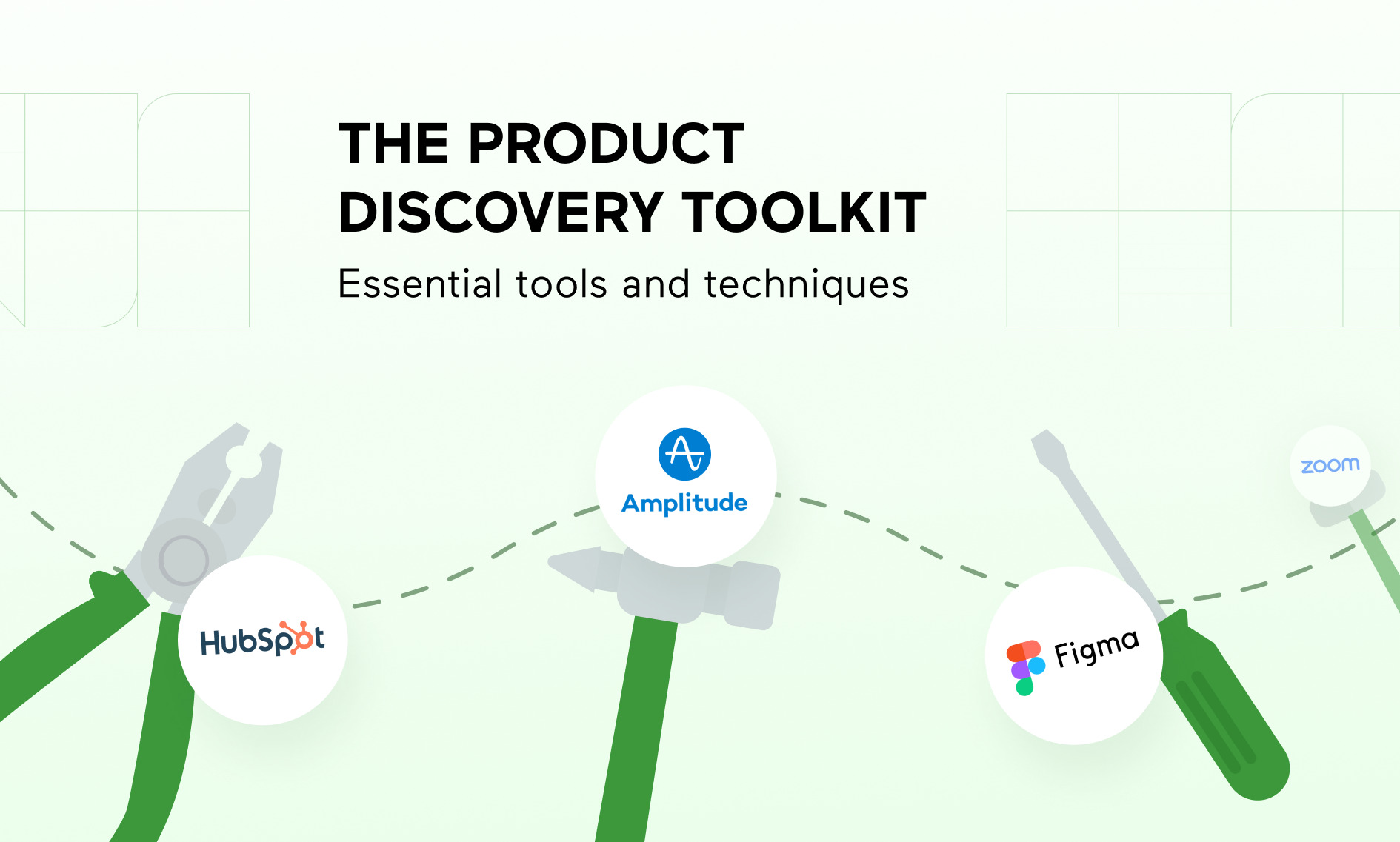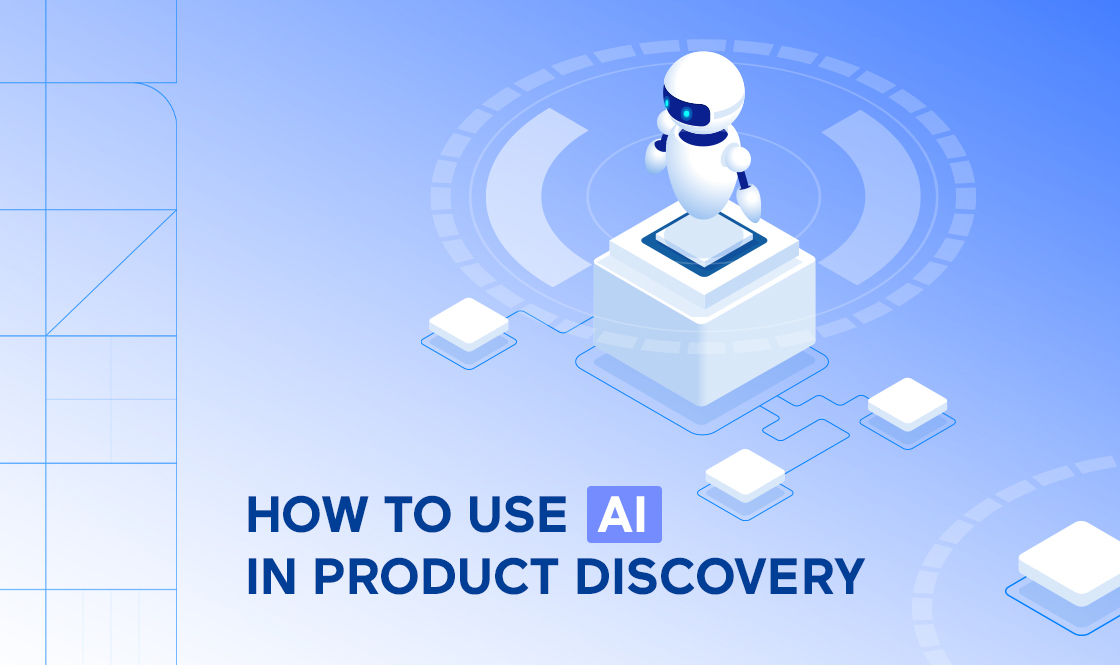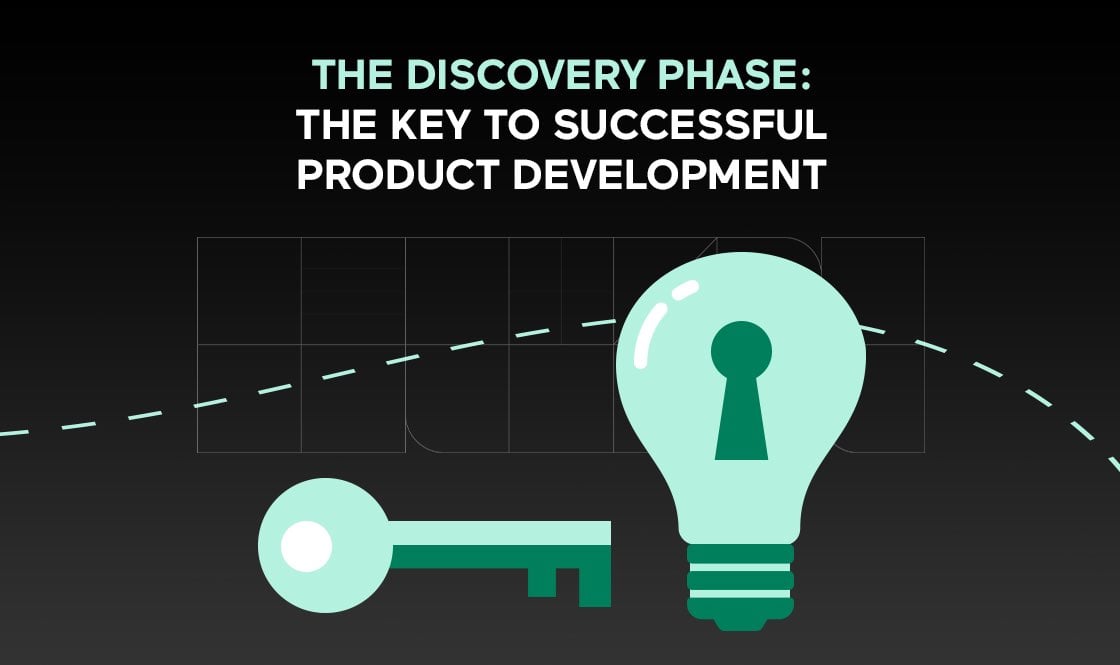A well-crafted product roadmap is essential to align stakeholders, prioritize development efforts, and guide a product’s growth from ideation to launch. This guide walks you through the types, best practices, tools, and strategic insights – like integrating AI in product discovery and outsourcing – to help you build a roadmap that drives product success.
What is Product Roadmap
A product roadmap is a guide, either written or visual, that outlines the different stages in a product’s development. It serves as a plan of action and a single source of truth that presents the strategy behind product features.
The product roadmap also explains the importance of features and how they will help the company reach its goals and objectives. This tool enables product managers and their development teams to track progress toward the stated goals and objectives and place priority on different tasks.
Product roadmaps are not just for product teams. In the context of the Agile framework, a product roadmap aligns key stakeholders, marketing teams, sales teams, product teams, and sometimes even customers by communicating the strategic direction of a new or existing product or the organization as a whole and what will be delivered.
Creating an effective product roadmap is a crucial task that requires time, unwavering focus, and clear communication among different stakeholders. It is essential to ensure that the roadmap accurately reflects the team’s priorities to all stakeholders – internal, external, and potential customers.
Product Roadmap in Agile Development:
- Shows the big picture of the project
- Articulates a product’s strategy
- Maps out phases and steps of the development process
- Outlines future product functionalities
- Guides the team’s day-to-day work
- Tracks progress toward stated goals and objectives
- Serves as a collaboration and communication tool
Why Product Roadmaps are Important at the Ideation Stage of Product Discovery
During the product discovery phase, the optimal time to create a roadmap is after completing strategic product planning and establishing an outline for the product’s features and release timeline. This usually occurs during the ideation stage of product development when the product manager and the team have a basic understanding of the company’s overall strategy, the product’s goals, and the target market.
In addition, developing a product roadmap during the ideation stage of product discovery can help spot potential risks and challenges that may arise later on. By considering factors such as market trends and customer needs, product managers can anticipate potential roadblocks and tweak the product roadmap accordingly. This can help cut down on delays and ensure that the product is delivered on time and within budget.
💡 Product Roadmap During Ideation Stage
- Provide direction to the team
- Ensure all teams are aligned with product priorities
- Allow for feedback and consensus among team members and stakeholders
- Identify gaps in all areas of the product journey
Creating a product roadmap doesn’t stop with the ideation stage. A roadmap is a dynamic document that should never be seen as final. In an agile work environment, as product managers and their teams gain new insights, the roadmap will naturally evolve throughout the development of the product.
Engaging in product discovery services can significantly enhance this process by providing insights into user needs and market demands, ensuring that the roadmap is both strategic and user-centric.
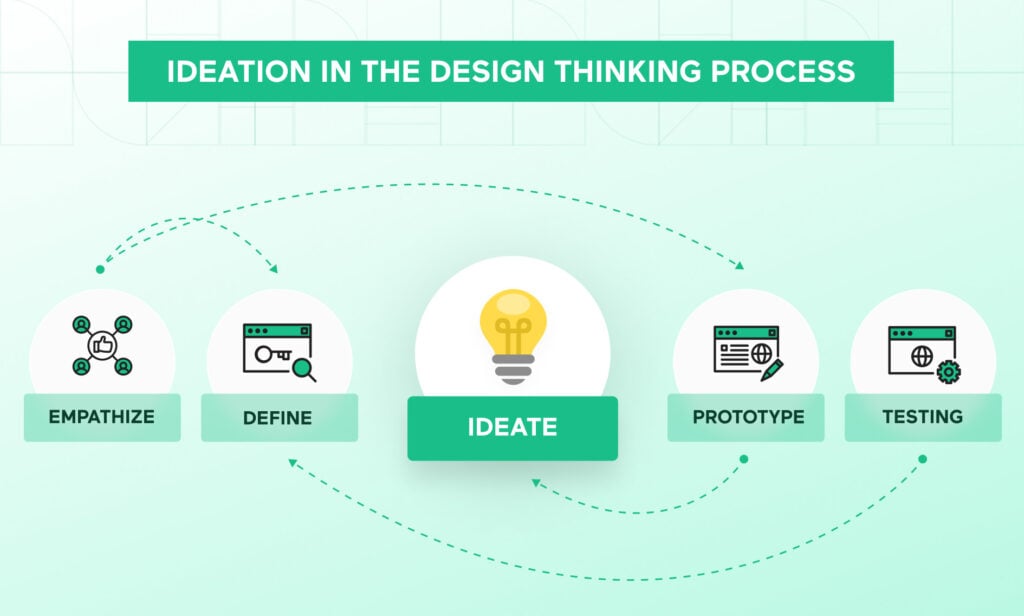
5 Types of Product Roadmaps
There are several types of product roadmaps, each serving different purposes.
Strategy-based Roadmap
The strategy roadmap, also called the goal roadmap or GO (goal-oriented) map, outlines the direction of the product and the high-level efforts to achieve the product goals. It shows the progress on initiatives to leadership and ensures cross-functional teams are aligned with the business strategy. Strategic roadmaps typically cover a longer term of 12-18 months and focus on the product vision, goals, and objectives.
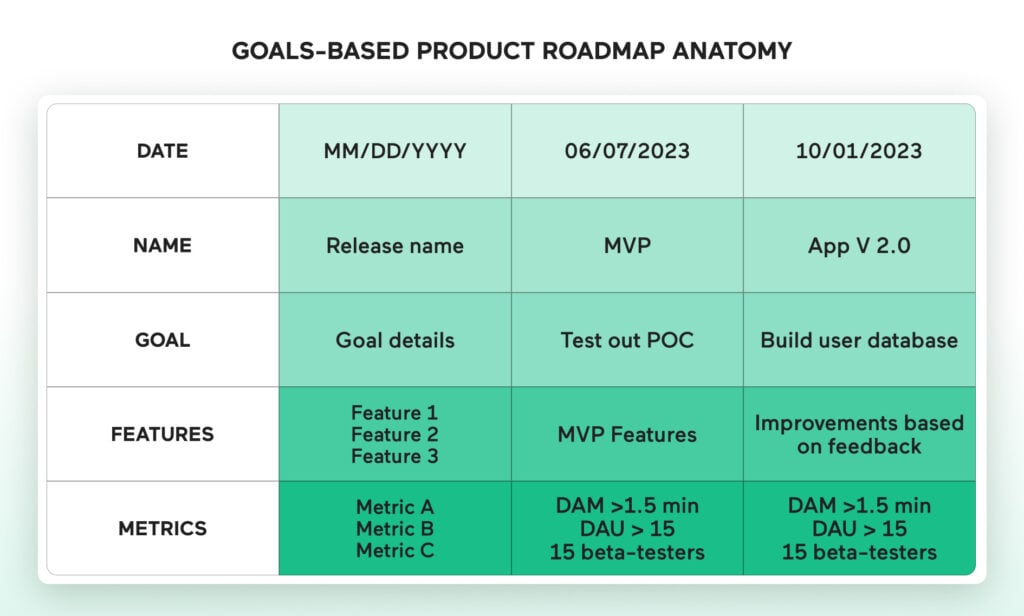
When is a Strategy Roadmap used most effectively?
Strategy roadmaps are ideal for products that are driven by specific goals or objectives. They allow teams to stay flexible and focused on high-level outcomes, rather than getting bogged down in specific features. These roadmaps structure product planning around specific business and product goals, which serve as a kind of justification for building the feature.
Strategic Roadmap Benefits
- provide a clear vision of what the product aims to achieve and how it contributes to broader business goals
- offer feature prioritization and implementation flexibility, allowing product teams to adjust their approach
- focus on features that help accomplish the stated goals
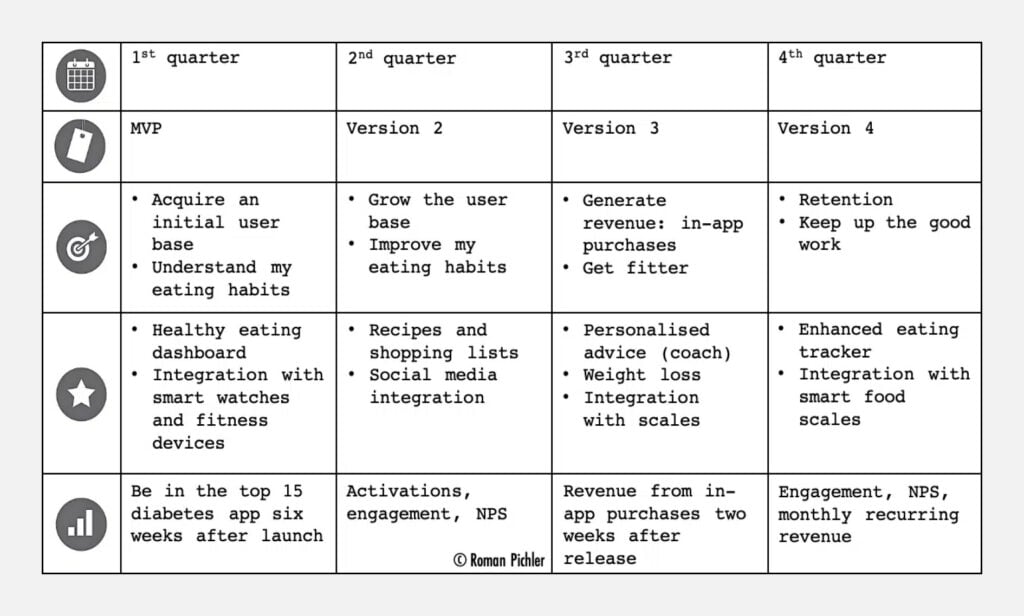
Feature-based Roadmaps
Feature-based roadmaps are short-term plans that focus on specific features and functionalities. They usually cover a period of 2-6 months and help product owners prioritize features based on customer feedback, market trends, and business goals.
Feature product roadmaps emphasize individual functions that will be delivered in the product. They include a detailed breakdown of features, their priorities, and estimated release dates or time frames.
When is using a Feature Roadmap best?
Features roadmaps are perfect for communicating the details of what is coming and when to customers and other teams. They focus more on feature output rather than on the outcome of those features: feature roadmap doesn’t always explain why the features are there, but it does show probable release dates for the features.
Feature-based roadmaps are ideal when product teams have a clear understanding of the desired features, their priority order, and the estimated timeline for their implementation. They provide granular visibility into the features being planned. However, it’s important to note that roadmaps should be open to change to allow companies to adapt to changing market conditions. Focusing too much on features and dates may be interpreted by some stakeholders as commitments set in stone.
Feature Roadmap Benefits
- deliver value to customers in small increments
- clearly specify what features will be developed and what the timeframes are
- provide stakeholders with a shared understanding of feature development priorities
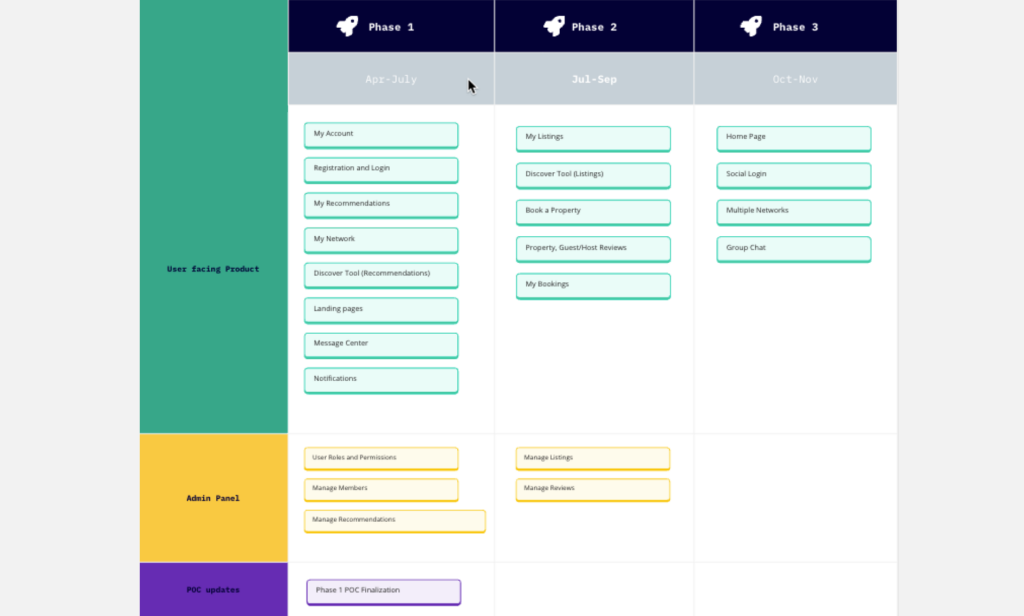
Release-based Roadmaps
Release-based roadmaps, also referred to as “feature-by-release” roadmaps, are tactical plans that detail the specific features and functionalities to be delivered in upcoming releases. These roadmaps typically span 1-3 months and help product owners to plan and execute product releases.
Release roadmaps focus primarily on delivering specific features rather than on high-level goals or strategic alignment. As a result, they may not always provide the broader context or strategic objectives that underpin feature prioritization.
When is a Release Roadmap most effective?
Release roadmaps are effective for teams that have a clear understanding of feature dependencies, development timelines, and the ability to deliver features incrementally. They provide detailed insight into what needs to be done, when it needs to be done, and who is responsible for each task.
Release-based roadmaps are especially useful for coordinating release activities across cross-functional teams such as marketing, sales, and customer support. They also play a critical role in managing stakeholder expectations and ensuring that product features are delivered on schedule. They are especially useful when you have a predetermined release schedule or when it’s important to communicate feature rollouts to customers or internal teams.
Release Roadmap Benefits
- provide a clear view of the features planned for each release
- help stakeholders and product teams understand the scope and timeline of feature delivery
- show how a product is progressing over time and what value each release delivers
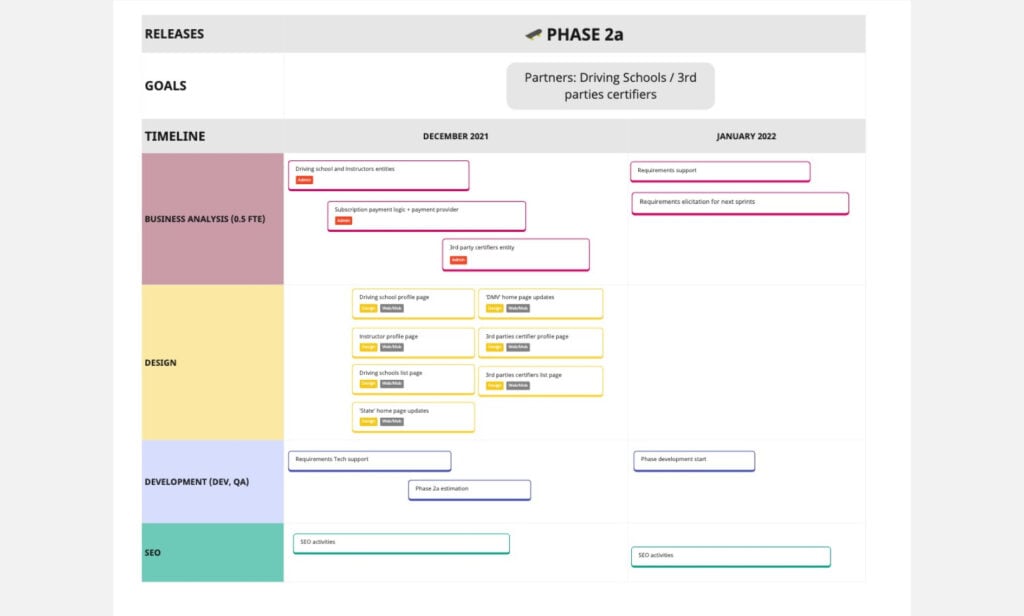
Objective-based Roadmaps
Objective-based roadmaps are designed to achieve specific outcomes or desired results. They typically cover a period of 3-6 months and help product owners align product development with business goals. These roadmaps are essential for measuring the success of the product, as they focus on the impact or value that the product aims to deliver to users or the business, rather than specific features that may or may not deliver value.
Defining and measuring outcomes in objective-based roadmaps can be challenging, as clear metrics and tracking mechanisms are required. It may be difficult to determine the specific features or initiatives that will directly lead to the desired outcomes.
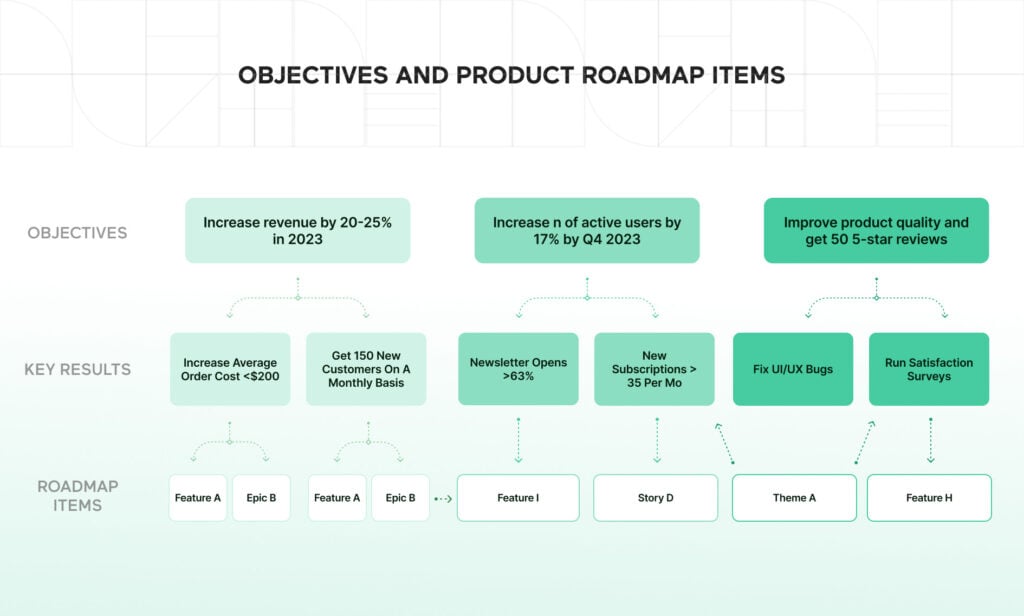
When is an Objective Roadmap most effective?
Outcome-based roadmaps are ideal for product teams that aim to achieve specific business objectives. They are especially helpful for customer-centric organizations that seek to drive user engagement, retention, or revenue growth. These roadmaps align product development with desired outcomes and prioritize user value over specific features.
Objective Roadmap Benefits
- foster better flexibility by being tied to outcomes rather than to specific features
- provide a framework for prioritization and ensure a consistent pursuit of the product strategy
- maintain focus on customer needs and provide flexibility in achieving the desired outcomes
Now-Next-Later Roadmap
Product roadmaps typically span multiple months, quarters, or even years. However, the Now-Next-Later roadmap takes a different approach and categorizes work into three distinct timeframes, ranging from immediate to long-term:
- “Now” represents current or ongoing work
- “Next” signifies upcoming priorities
- “Later” indicates longer-term or future initiatives.
Now-Next-Later roadmaps provide a high-level view of the product vision, with each element of work tied back to a business objective. However, this format typically doesn’t provide detailed information on specific dates or milestones within each category, which may pose challenges for certain teams who require a more detailed understanding of each timeframe.
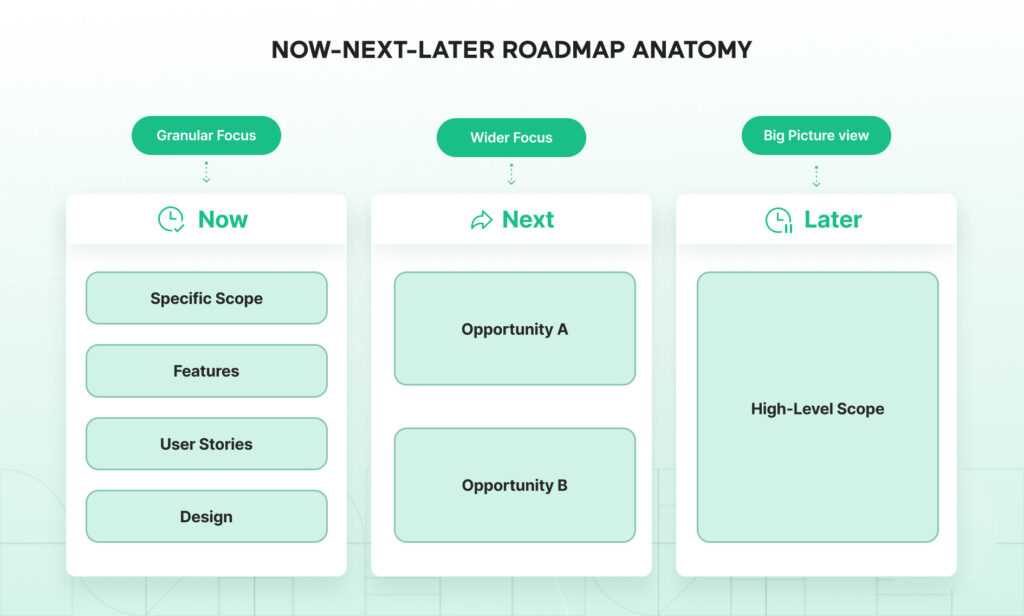
When Now-Next-Later Roadmap Is Used
Now-Next-Later roadmaps are useful for communicating high-level priorities and providing stakeholders with an overview of the product’s immediate focus and future direction. They balance transparency about ongoing work and the flexibility to adapt to changing needs, making them a great fit for lean product teams. Now-Next-Later roadmaps can also be helpful for getting a project or process back on track after facing an obstacle or delay.
Now-Next-Later Roadmap Benefits
- provide stakeholders with an overview of the product’s immediate focus and future direction
- are flexible and adaptable, as they do not communicate specific dates
- portion out certainty over time horizons without early commitments
Choosing the right type depends on factors like the product’s maturity, market dynamics, and stakeholder needs.
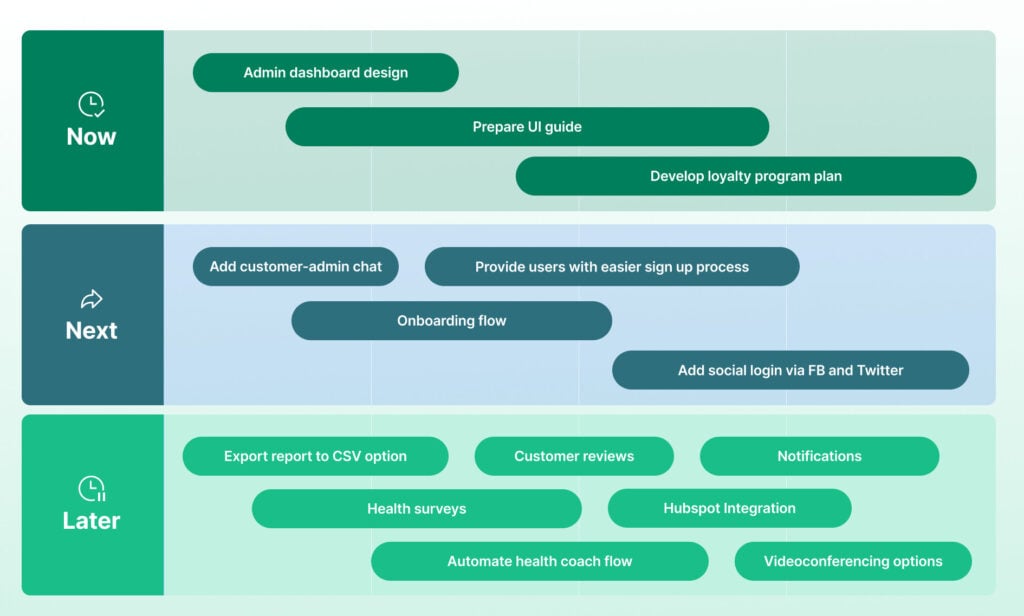
Best Practices To Create a Great Product Roadmap
A well-designed product roadmap communicates value and keeps stakeholders focused on goal-centric work. Here are some best practices:
1. Clarify product strategy and vision
To ensure that the product roadmap aligns with and supports broader initiatives, the product manager must have a strong understanding of the product strategy, market fit, and company goals. This information provides valuable insights for clarifying the vision of a product, prioritizing features, and creating a product roadmap that accurately articulates the objectives.
2. Cater roadmap presentations to target audience
When finalizing the format and content of a roadmap, it is crucial to consider the audience it will be presented to in order to ensure it meets their specific needs. Stakeholders, such as developers, executives, and customers, may require different types of information from the roadmap to effectively perform their roles and make informed decisions.
Development teams will need information about the scope of features and limits that a shorter timeline may create, while executives will be more interested in the costs, the delivery time, and what will be included. A tailored approach to the roadmap’s presentation can help ensure that all stakeholders are satisfied and have a clear understanding of the product’s development and direction.
3. Create a product roadmap draft that is visually appealing
A successful product roadmap should be presented in a way that is easy for the audience to understand. It should show the project’s goals, activities, timelines, and approvals visually. Important details should be emphasized, allowing users to monitor progress and identify any constraints or issues that require immediate attention.
4. Use frameworks to prioritize features
Once the list of potential features is compiled, whether they are epics or more granular user stories, it is important to prioritize them. This enables gradual releases or delegation of resources to high-priority features. Popular frameworks used for prioritization include Story Mapping, MoSCoW, and Kano Analysis.
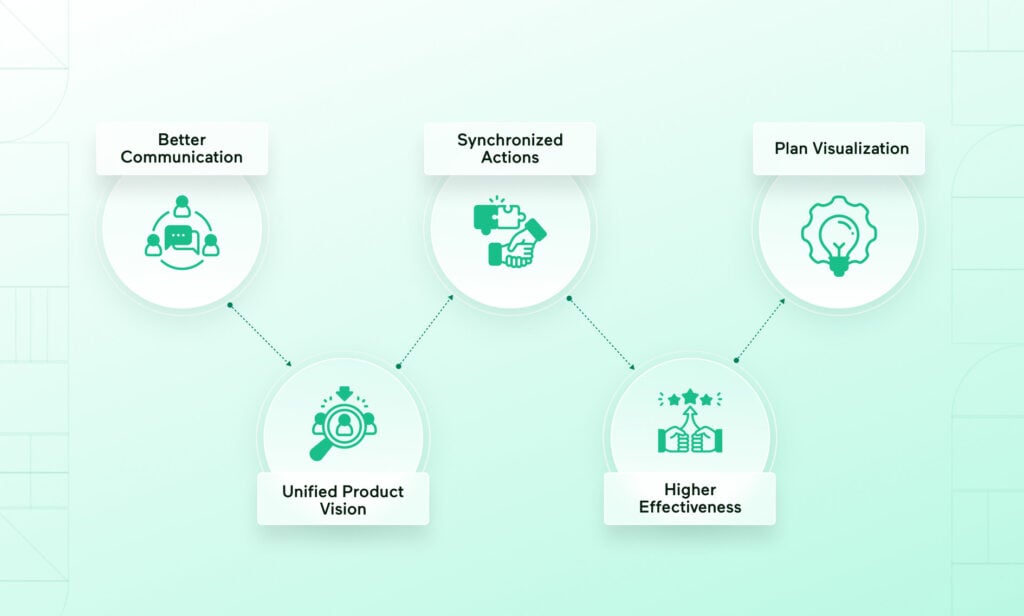
5. Gather feedback
Gathering feedback is crucial during all stages of product discovery as it provides valuable insights into customer needs and preferences. By iterating on product design based on customer feedback, teams can create products that are more likely to succeed.
Feedback can be gathered via interviews with customers or running surveys. Customer interviews can provide insight into user needs and expectations, while surveys are useful for collecting quantitative and qualitative data from users. These techniques were already described in the Empathizing section above.Incorporating strategic product development practices ensures that feature prioritization aligns with long-term business goals.
6. Share product roadmap with stakeholders
To ensure that all stakeholders have access to the product roadmap, it’s important to make it easily accessible while also limiting editing permissions to avoid confusion and maintain a clear and accurate representation of the product’s development and direction. This way, everyone can stay up to date with the progress of the product and understand how it connects to the broader business objectives.
7. Be transparent about timelines and deliverables
To achieve success and keep the roadmap viable, it is important to be transparent and practical about timelines, deliverables, and priorities. It is worth connecting project features, goals, and releases to specific milestones in the timeline and consulting with stakeholders before setting deadlines to ensure they are achievable.
8. Align product roadmap to company goals
When working on features, stories, epics, and other tasks within the product roadmap, it’s important to always relate them to the agreed-upon product goals, and, additionally, it is crucial to align the roadmap to the more significant company goals.
Components of a Product Roadmap
The details and context may vary, but all product roadmaps contain these key components:
- Product Goals: Goals correspond to product features, outlining how and when those features will be implemented. They should be time-bound and measurable, with clearly defined success metrics.
- Product Initiatives: Initiatives on a roadmap bring together sets of stories, features, tasks, and projects that relate to the company’s strategy and product goals. These high-level themes of work help teams focus on goal-centric efforts.
- Releases: Releases often contain multiple features that are rolled out to users at the same time. Sometimes completed features may be held until other features are finally implemented, allowing multiple features to be included in one release for the best customer experience.
- Epics: In agile product roadmaps, epics are collections of stories that typically span multiple releases or even several teams. Epics are then broken down into more minor features that are delivered incrementally.
- Product Features: Features are specific pieces of new or improved functionality that deliver value to users. They can be built around product capabilities, platform components, or system performance. The development team is typically responsible for processing user feedback and deciding which features to implement next.
- User stories: User stories are written from the end-user’s perspective and describe the ultimate goal of a product feature. They represent an atomic unit on a product roadmap contributing to future epics.
- Timeline: Timeline visualization depicts the expected release dates of products over time. The timeline can span from days to quarters or even years, depending on the complexity and level of detail associated with a given release.
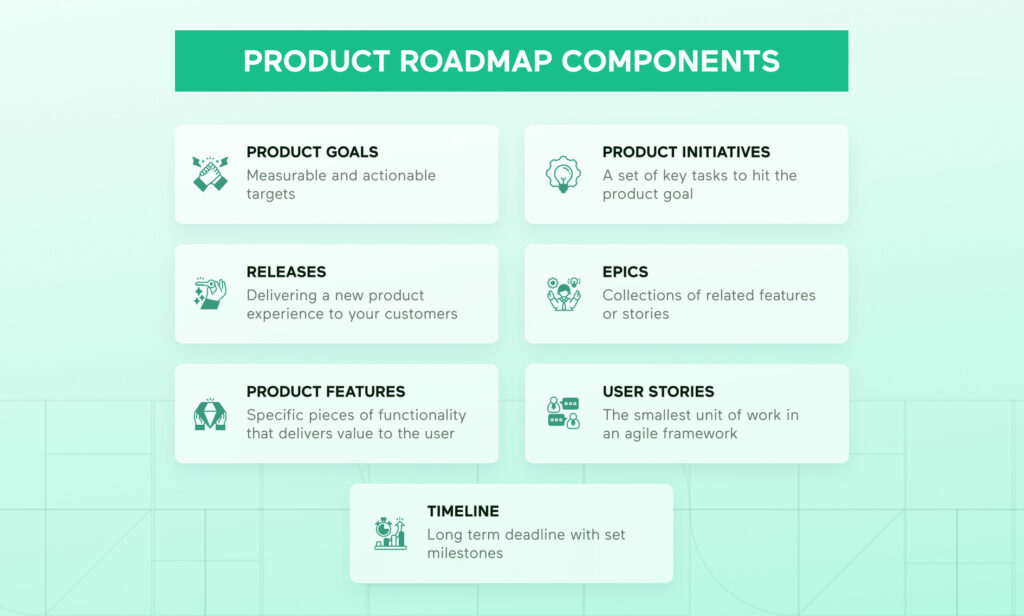
Product Roadmapping Tools
To craft and communicate your product roadmap effectively, you can use various roadmapping tools. However, it’s important to first decide on your roadmap approach and then find a tool that fits your needs.
Here’s a list of software options that you can use to create a product roadmap:
Selecting the right tool depends on your specific needs and the chosen roadmap approach.
Integrating AI into Product Discovery
Leveraging AI in product discovery can provide data-driven insights, enhancing decision-making and identifying user needs more effectively.
By incorporating AI, teams can analyze user behavior patterns, predict market trends, and prioritize features that deliver the most value, thereby refining the product roadmap.
Outsourcing Software Development
For non-technical founders, understanding the nuances of outsourcing is crucial. Our guide to outsourcing software development offers a step-by-step approach to collaborating with external development teams effectively.
This guide emphasizes the importance of clear communication, setting expectations, and choosing the right partners to ensure successful product development.
What Type of Product Roadmap Is Best For Your Product?
There is a lot of overlap among the different product roadmaps discussed above, and combining portions of each can help you create a tailored product roadmap that is ideal for your specific product.
When selecting the most appropriate type of product roadmap, consider factors such as the maturity of your product, the market you are targeting, customer feature requests, backlogs of work, what your audience needs to know, your budget, and how fast you need to get to market. Then, decide which format best communicates that information.
If your product is mature and has a reasonable market share, it will likely experience fewer changes over time. In this case, a feature-based roadmap might be more suitable.
If you are operating in a market where product features and technology are constantly changing, a goal-based product roadmap is a better choice.
Finally, if your stakeholders do not need exact dates, you can give them a sense of features or themes with rough timeframes. A Now-Next-Later roadmap might work well in this case.
The decision to choose a type of product roadmap and its components should be made after careful consideration by a cross-functional product team. The product manager should lead the way to ensure that any product roadmap supports and communicates the overall vision.
If you have a product you want to launch and are struggling to determine where to start the roadmap process, our team is happy to answer any of your questions either by email or over a call. Just reach out with your questions, and thanks for reading our latest post on Product Roadmaps.
Conclusion
Creating an ideal product roadmap involves strategic planning, stakeholder alignment, and continuous refinement. By integrating product discovery services, embracing strategic product development, and utilizing tools like AI, teams can craft roadmaps that not only guide development but also drive business success.
Ready to elevate your product planning?

